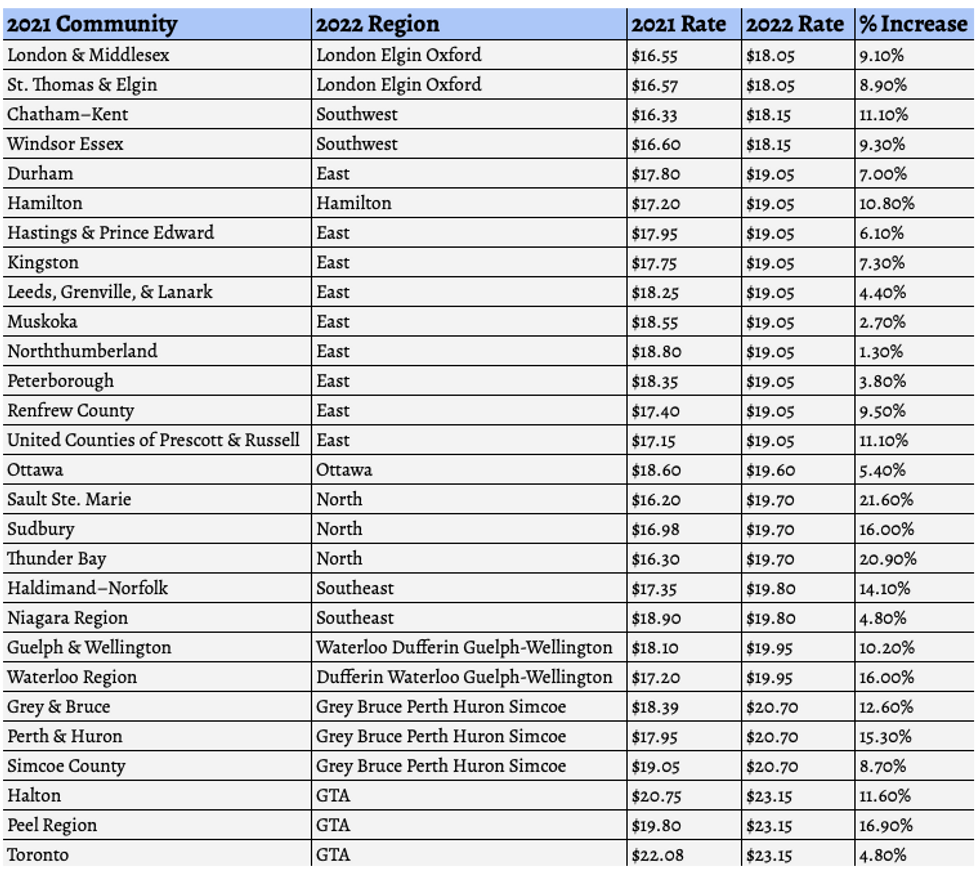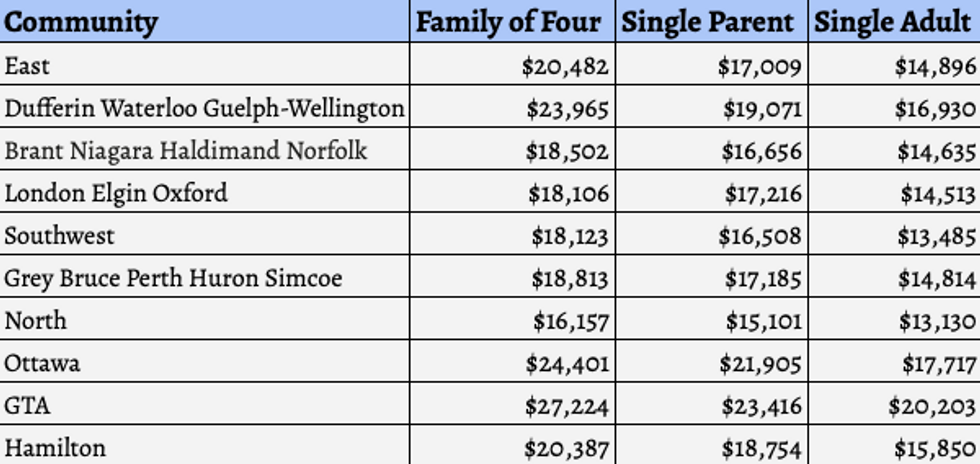Ontario's minimum wage sits dollars below what is considered livable in even the most affordable region of the province, a new study from the Ontario Living Wage Network (OLWN) found.
The study, released on Monday, calculated the living wages needed across Ontario in 2022 by economic region. Of the 28 regions analyzed, London-Elgin-Oxford had the lowest living wage of $18.05 -- $2.55 above the current provincial minimum wage of $15.50. Unsurprisingly, Toronto had the highest living wage of $23.15, a full $7.65 above minimum wage.
"This year’s living wage calculations emerge from a backdrop of record–breaking inflation and Consumer Price Index increases, and workers at the bottom end of the wage scale are most vulnerable to these kinds of fluctuations," the report reads.
Inflation and the skyrocketing cost of living seen throughout the year has caused living wages in several regions to jump substantially from 2021. Sault Ste. Marie saw the biggest increase, with the living wage there rising by 21.6% in just one year to $19.70. It was closely followed by Thunder Bay with a 20.9% increase, and the Peel Region with a 16.9% jump. Nearly half of the communities in the report saw double digit percentage increases.

To calculate each living wage, OLWN looked at the income needed to cover basic living costs for three types of families: two parents with two children, a single parent with a child, and a single adult. After tallying the cost of living based on factors such as food, shelter, clothing, transportation, medical expenses, internet, cell phones, child care, toiletries, and recreation, all applicable government taxes and benefits, such as the Canada Child Benefit, were factored in.
Food costs have been a major strain on Canadians' finances and are up 9.7% across the country. In Ontario, the cost of food is one of the highest financial burdens included in the living wage calculation, the study says, and contributed significantly to the increase in living wage rates for all communities.
These costs are highest in Northern Ontario where a family of four can expect to spend $12,373 per year on food, while a single adult has an average annual food bill of $4,728. The Greater Toronto Area has the second-most expensive food costs, averaging $11,245 for a family of four and $3,850 for a single adult. The least expensive region for food is Ottawa, where a family of four pays $9,776 per year at the grocery store.

With rental prices skyrocketing across Ontario, shelter costs were another major financial factor for all Ontario residents. This cost, however, is most burdensome for single parents. In the GTA, for example, a family of four renting a three-bedroom unit can expect to pay $27,224 per year in shelter costs, which includes rent, hydro, and tenant insurance. A single parent renting a two-bedroom in the GTA, on the other hand, who does not have the potential for a second income in the household, is faced with paying $23,416 per year -- 86% of the cost of a three-bedroom.
Shelter costs were lowest in Northern Ontario, where a family of four renting a three-bedroom would typically pay $16,157 per year. A single adult would pay just $13,130.

The OLWN says its goal with calculating a living wage is to highlight the ongoing struggles faced by workers at the bottom end of the wage scale who are most vulnerable to fluctuations in inflation.
"A living wage is an effective tool to combat working poverty by making sure that employees can make ends meet where they live," the report reads. "By incorporating expenses that a worker must cover, such as shelter, food, transportation and more, our living wages are much closer to reality than a politically set minimum wage."


















